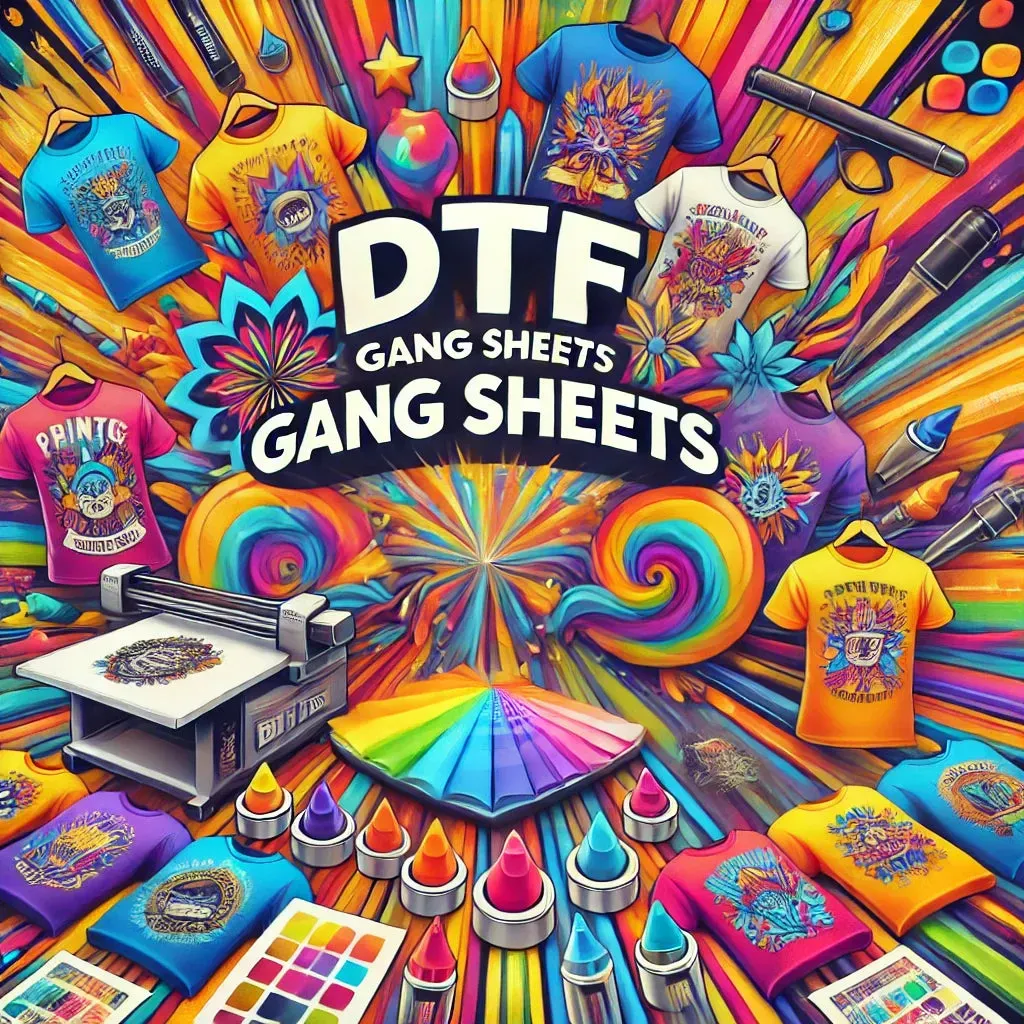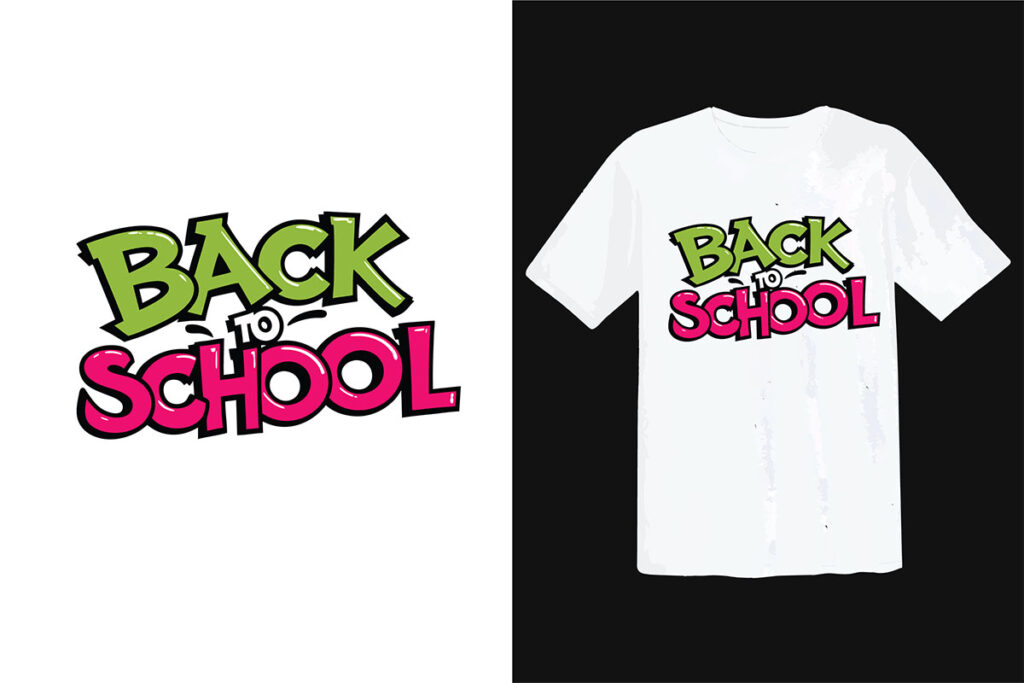DTF Gangsheets are a game-changer in the world of custom apparel printing, enabling designers and businesses to streamline their workflow effectively. By utilizing DTF printing techniques, you can achieve vibrant colors and impressive durability, all while economizing fabric usage. These specialized printing sheets allow for multiple designs to be printed at once, reducing waste and maximizing efficiency. As we delve deeper into the best practices for DTF, you’ll discover how properly prepared gangsheets can elevate the quality of your prints. Join us as we explore essential techniques for mastering Direct to Film printing, ensuring you get the most out of your DTF printing materials.
In the realm of fabric decoration, gangsheets printing represents a practical solution for maximizing design output. Utilizing the innovative approach of Direct to Film printing, designers can achieve stunning visuals with greater efficiency. This method allows for the simultaneous transfer of various artworks onto a single sheet, significantly reducing printing costs and material waste. By adopting best practices and understanding the nuances of DTF, you can enhance your printing projects considerably. This article will guide you through important tips and techniques to help you navigate the complexities of DTF printing materials and optimize your design workflows.
The Importance of Material Selection for DTF Printing
Material selection is a pivotal factor in achieving high-quality DTF prints. The choice of transfer films, inks, and fabrics directly influences the vibrancy and durability of the printed designs. High-quality transfer films specifically engineered for DTF printing will enhance adhesion to fabrics while maintaining the integrity of your graphics. Investing in superior DTF inks, known for their rich colors and excellent bonding capabilities, will also lead to more vibrant and long-lasting prints. When selecting fabrics, cotton continues to be the top choice, but it’s essential to consider the compatibility of the design with the chosen fabric to ensure optimal results.
Furthermore, exploring a variety of fabric options can help expand your printing versatility. For instance, blends or synthetic materials may work well for specific applications such as sportswear or fashion garments. It’s crucial to conduct tests with different materials to confirm their performance under various printing conditions. Understanding how these materials interact with DTF processes is vital for both novices and experienced printers alike, ensuring that the final product meets the desired quality and expectations.
Best Practices for Preparing Gangsheets
Preparing gangsheets effectively can significantly enhance the efficiency of your DTF printing process. Having a well-structured design layout is paramount; using graphic design software to arrange your images optimally can save time and materials. The goal is to fit as many designs on a single sheet as possible without compromising the space needed for cutting. Appropriate spacing not only prevents design overlap but also aids in the clean separation of images, reducing waste and improving overall print yield.
Additionally, it’s equally important to run test layouts before printing your final designs. Adjustments based on initial test runs can mitigate issues that may arise during the actual printing. These tests can reveal spacing problems, color discrepancies, or design flaws that could affect the final product. Such thorough preparation ensures that your gangsheets are not only efficient but also yield high-quality prints consistently.
Optimizing Printer Setup for DTF Gangsheets
The setup of your printer plays a crucial role in the final output of your DTF gangsheets. Each printer model may have different requirements for optimal performance, and understanding these is essential for quality production. Regular printer maintenance, which includes cleaning the print heads and checking for alignment, ensures that your printer can operate at its best. Neglecting these practices can lead to subpar prints that don’t accurately represent your designs.
Moreover, adjusting printer settings according to the specifics of the materials in use can enhance results significantly. Important settings such as resolution, ink density, and printing speed should be tailored based on the fabric type and the intricacies of your designs. This level of customization allows you to achieve precise prints that reflect the vibrancy and detail you envision, setting your work apart in the competitive custom apparel industry.
Essential Pre-Press Techniques for High-Quality Prints
Before embarking on the actual heat pressing process, implementing essential pre-press techniques can set the stage for high-quality DTF prints. One key practice is the treatment of fabrics prior to application. Treating your garments enhances the fabric’s bonding capabilities with the DTF inks, thus resulting in longer-lasting prints that withstand regular wear and tear. This pre-treatment step is critical in achieving a print that adheres well and retains its vibrancy over time.
Creating a controlled environment for the printing process can also yield significant benefits. Maintaining a stable temperature and humidity level is vital, as high humidity can disrupt the adhesion of the DTF ink, while low humidity may cause the fabric to dry too quickly, detrimentally affecting contact with the inks. By ensuring these conditions are optimal, you can enhance the integrity and durability of your prints, paving the way for a successful DTF printing experience.
Post-Press Procedures: Maximizing Durability
After completing the printing process, proper post-press handling is crucial for maximizing the durability and appearance of your DTF prints. The first step is adhering to the recommended heat press settings. Applying the correct temperature and pressure is vital to ensure the ink bonds effectively with the fabric without causing damage to either the print or the garment. Incorrect settings can lead to peeling, fading, or other issues that compromise the quality of your printed design.
Moreover, allowing the printed fabric to cool naturally after pressing is a practice that shouldn’t be overlooked. This cooling phase is vital for the print to set properly, allowing for a robust bond between the ink and the fabric. In cases where additional protection is needed, performing a second press with a protective cover ensures that the prints achieve their maximum lifespan and resilience, safeguarding your investment and enhancing customer satisfaction.
Testing and Feedback: The Key to Continuous Improvement
In any printing operation, testing and feedback are essential components for continuous improvement and mastery of DTF techniques. Conducting trial prints with various designs and materials helps identify potential issues early on, allowing you to refine your process before executing full production runs. This practice not only minimizes waste but also prepares you for unexpected challenges that could impact the final product.
Collecting feedback from these test prints is equally important. Engaging with customers or peer reviews can provide valuable insights into the quality of your prints and areas for enhancement. This ongoing cycle of testing, learning, and adjusting is what sets successful DTF printers apart, ensuring they remain adaptive and responsive to changing trends in custom apparel while continually honing their artistry.
Frequently Asked Questions
What are DTF Gangsheets and how do they work?
DTF gangsheets are large sheets that contain multiple designs optimized for Direct to Film (DTF) printing. This technique allows printers to efficiently produce several prints in one go, reducing material waste and saving costs. By arranging designs thoughtfully on a gangsheet, businesses can enhance workflow and productivity.
What materials are recommended for DTF Gangsheets?
For successful DTF gangsheets, it’s crucial to select high-quality transfer films and DTF inks that ensure vibrant colors and strong adhesion. Additionally, choosing the right fabric, preferably cotton, plays a significant role in the outcome of the prints.
What are the best practices for preparing DTF Gangsheets?
Preparing DTF gangsheets effectively involves using graphic design software to layout designs with proper spacing, maximizing material use without overlaps, and conducting test runs to ensure print quality. Optimizing the layout ensures a successful final print run.
How should I set up my printer for DTF printing on gangsheets?
Printer setup for DTF gangsheets includes regular maintenance like cleaning heads and aligning settings. Adjust printer parameters such as resolution, ink density, and speed based on the design and fabric, which can significantly influence the quality of prints.
What are the key pre-press techniques for DTF Gangsheets?
Essential pre-press techniques for DTF gangsheets involve treating the fabric to enhance adhesive qualities and maintaining optimal temperature and humidity conditions in the printing environment. These steps improve ink adhesion and the overall durability of the final prints.
How do I ensure the best results post-press for DTF Gangsheets?
To achieve optimal results after pressing DTF gangsheets, use the recommended heat press settings for temperature and pressure. Allow fabrics to cool naturally and perform a second press with a protective cover to enhance print longevity and durability.
| Key Point | Details |
|---|---|
| What are Gangsheets? | Large sheets containing multiple designs arranged for efficient printing, saving material costs and reducing waste. |
| Material Selection | Choose high-quality transfer films, vibrant inks, and compatible fabrics for successful DTF printing. |
| Preparing Gangsheets | Efficient design layout and testing, maximizing material usage while ensuring clean cuts. |
| Printer Setup and Maintenance | Regular maintenance and appropriate settings for resolution, ink density, and speed are crucial. |
| Pre-Press Techniques | Pre-treat fabrics and maintain optimal temperature and humidity for better adhesion. |
| Post-Press Procedures | Use correct heat press settings and allow fabrics to cool properly for durability. |
| Testing and Feedback | Conduct trial prints and refine techniques based on feedback for continuous improvement. |
Summary
DTF Gangsheets are an essential aspect of mastering Direct to Film printing. By understanding the techniques and best practices such as material selection, preparation methods, printer maintenance, and post-press procedures, you can enhance the quality and longevity of your prints. Successful printing not only requires technical skills but also a willingness to adapt and learn from testing and feedback. Embrace the DTF community and keep evolving your craft to produce stunning, durable designs that stand out in the custom apparel market.



